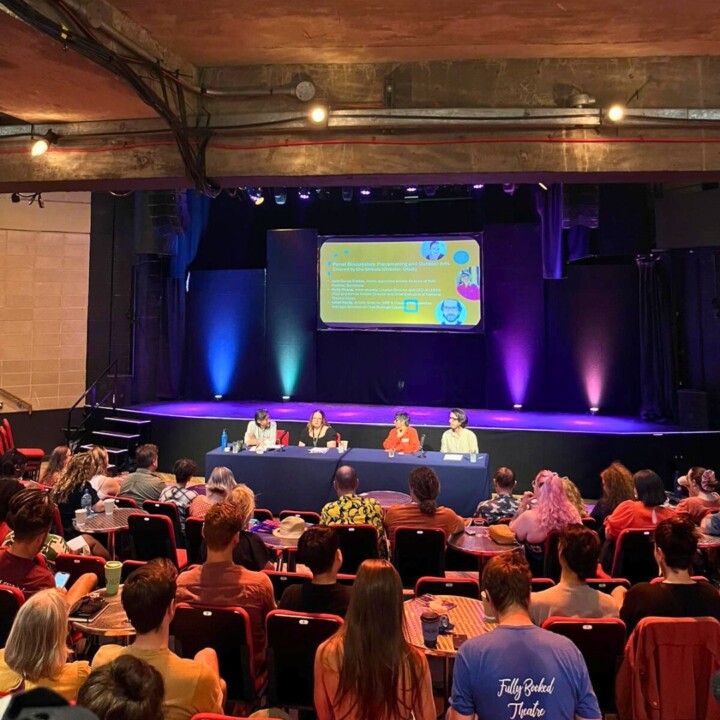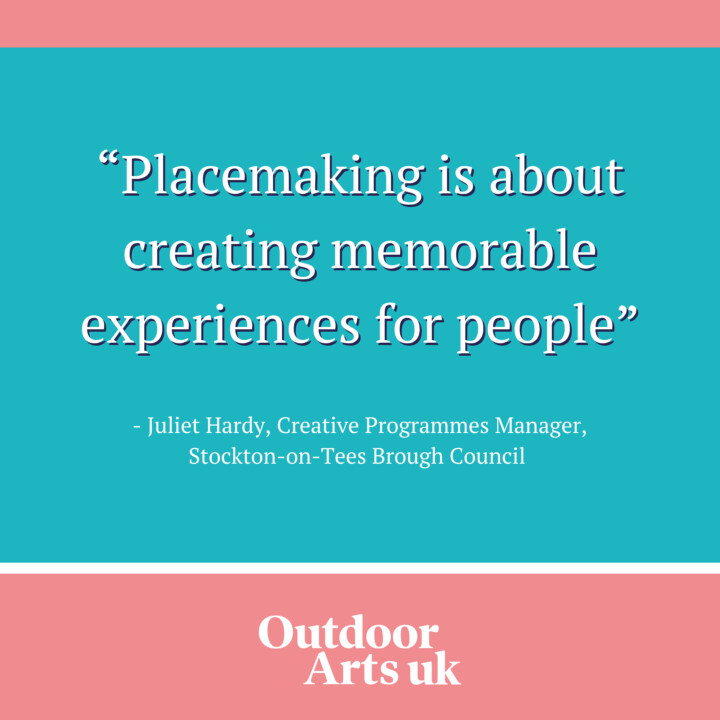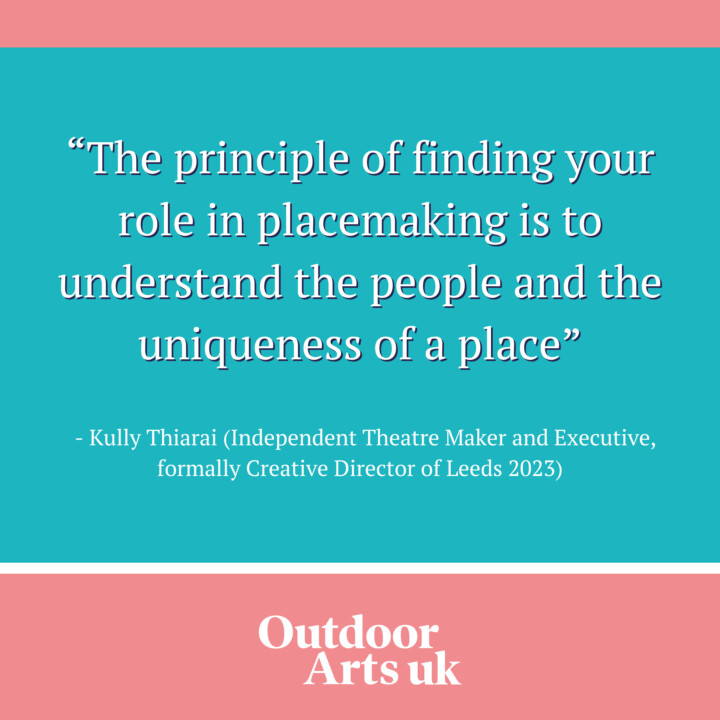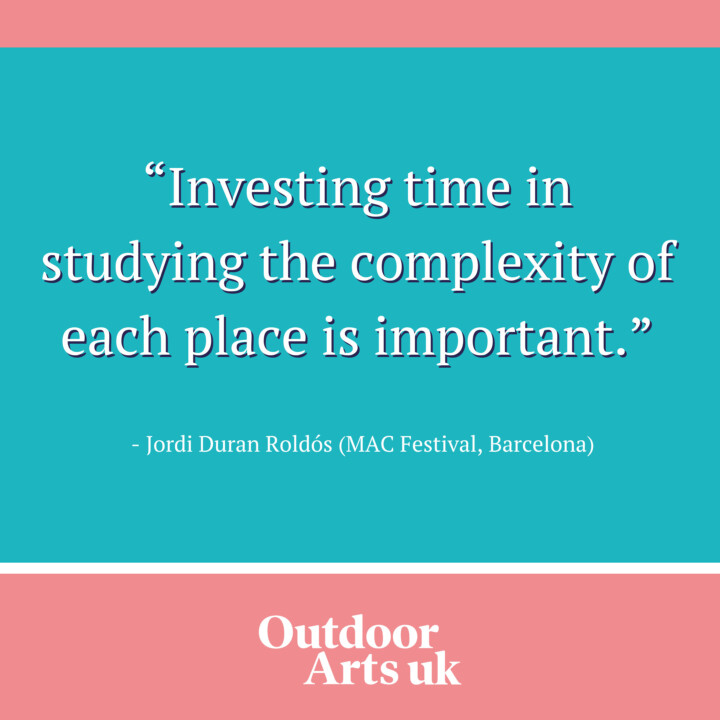
As part of Stockton International Riverside Festival (SIRF), OutdoorArtsUK co-hosted a panel talk with SIRF, Xtrax, and Without Walls on 3rd August. Our Director Sho Shibata chaired a conversation on “Outdoor Arts and Placemaking” with Jordi Duran Roldós (MAC Festival, Barcelona), Juliet Hardy (Creative Programmes Manager, SIRF), and Kully Thiarai (Independent Theatre Maker and Executive, formally Creative Director of Leeds 2023).
Placemaking at SIRF
Although we were too cautious to admit it at the time, the topic, the location, and the timing of the panel talk felt very relevant. Racially motivated, Islamophobic violence broke out in nearby Sunderland on the day before the festival, and unrest in Hartlepool 12 miles down the road had erupted two days before. Little did we know that Middlesborough was to see rioting on the night of our panel talk 6 miles to the east. As I wrote in my previous blog, Outdoor Arts in the midst of racially motivated violence, Juliet and SIRF team were operating in a very tense environment.
When we spoke about Placemaking and our sector’s role within it, Juliet’s words felt particularly pertinent. She said:
“Placemaking for SIRF is about creating memorable experiences for people to come shoulder-to-shoulder with those who they might not necessarily engage with on a day to day. It’s about people coming to Stockton and feeling all right to do that.”
Juliet is very well qualified to talk about SIRF and its 37-year history. Juliet grew up in Stockton and attended many editions of the festival as a punter. After being mentored by Jeremy Shine, Juliet became SIRF’s Artistic Director in 2022.
“Local people feel a lot of ownership over the festival so when I am planning for it, I really think about the experience that they have of our streets. Many of our audiences have been to several SIRFs over the years and gained amazing memories from it.”
It has taken 37 years of continuous support from Local Authorities, Arts Council England, and community groups to develop deep rooted civic pride in SIRF, and there was a sense that the community was not going to let rioters disrupt the town while it was on. Outdoor Arts may not be able to solve all the social problems, but SIRF has demonstrated that it can create a sanctuary.
How best to engage the community in placemaking was keenly debated between the panellists too.
Kully Thiarai on placemaking
Having taken creative leadership in multiple towns and cities, Kully Thiarai has vast knowledge. She was the Creative Director of Leeds 2023, and before that, the Artistic Director of National Theatre Wales. She presented work in a variety of outdoor spaces in both these positions. She said:
“The principle of finding your role in placemaking is to understand the people and the uniqueness of a place, and that can be the minutia of a ward, a neighbourhood, or city.”
Prior to taking charge of National Theatre Wales, Kully was the inaugural Artistic Director of the Cast in Doncaster in 2012. She told us a story of getting criticised for staging Kes. The London centric national press did not understand why she chose to stage this old film.
“I felt like, you don’t understand the dynamics of what that work means for the local people. Kes was not something I had thought of putting on stage before I came to Doncaster, but it was necessary and vital for that place at that time.”
Understanding Local Environments
From the conversations that flowed between us, both Kully and Juliet saw the importance of putting themselves into the shoes of the local people. It has very much been the key to success for their respective placemaking efforts.
Jordi agreed:
“Investing time in studying the complexity of each place is important. We can then propose artistic initiatives that invite citizens to gain interest in the use of public spaces.”
As well as being the Artistic Director of MAC Festival, Jordi has been involved in academic research in Europe. He sighted Domenico Di Siena’s work, who claimed that policy makers often regard public outdoor spaces as problematic and interfere to limit civic activities. According to another academic Manuel Delgado, the problem seems to arise from our tendency to pursue a perfect consensus despite its impossibility.
Jordi called on artists and festival programmers to acknowledge these tendencies when investigating complex social relations. Jordi introduced the Catalan company Eléctrico 28, and the French project Le Polau as examples of doing this well.
Placing art in public spaces makes it necessary for festival programmers to understand local context, and artists bring work that give these places new meaning and civic pride.
It was fitting that this conversation took place in Stockton, whose success sits on 37 years of public investment. It has enabled SIRF to put on transformative works by professional artists from across the world, the value of which was acutely felt this year amidst the unfolding violence. Voluntary civic action is crucial for community cohesion of course, but SIRF’s scale of success cannot be achieved purely by unpaid work. It requires proper resourcing so that festival organisers can create platforms that unify our communities with exceptional artistic work. Artists are of course the central cog in this placemaking process.
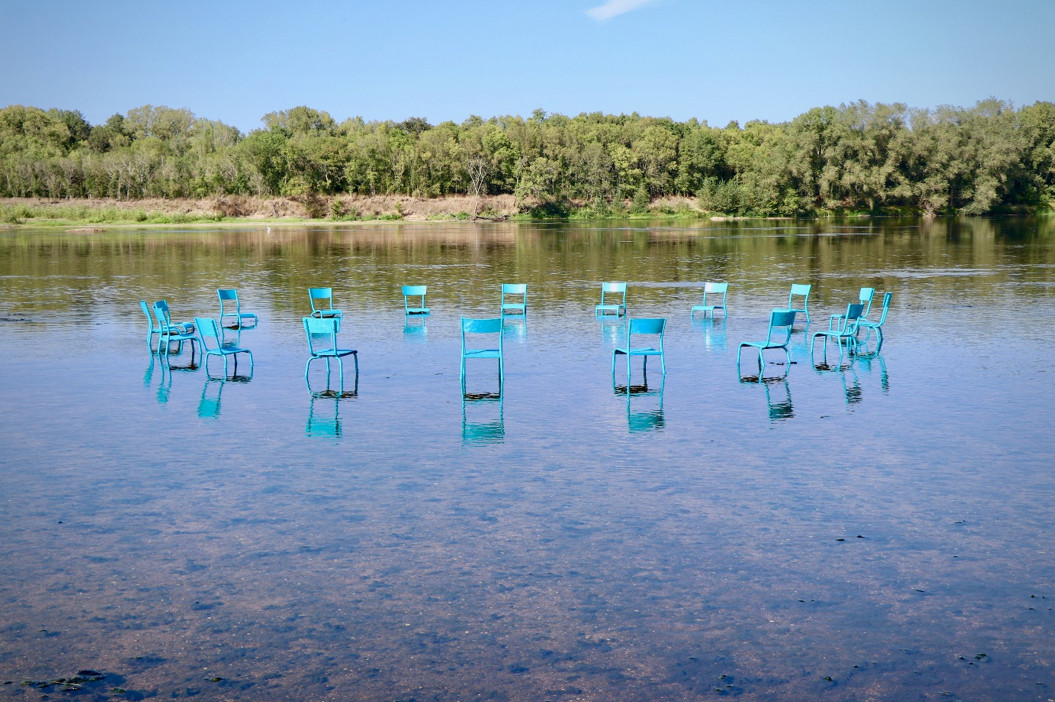
Jordi had the words to put this point across:
“Artists who work in Outdoor Arts are professionals with many years of training, and they provide strong artworks that voluntary groups cannot achieve. I think it’s important that one thing does not replace the other, but that they coexist, talk to each other.”
– Sho Shibata, OAUK Director
Sign Up to the Outdoor Arts Newsletter
Sign up to the Outdoor Arts Newsletter, our advocacy piece for Outdoor Arts, where you’ll receive news, sector information, and updates about upcoming events, performances and festivals straight to your inbox.

